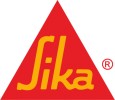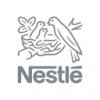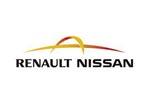Production Trainee
30+ Production Trainee Interview Questions and Answers
Asked in Delta Finochem

Q. What is the chromatography, Titration type chain eth- metha- pro Tollune structure PH range Neutral pH Acid name, base name Organic ,inorganic compounds name Project information Name reaction Coupling reaction
Chromatography is a technique used to separate and analyze mixtures, titration is a method to determine the concentration of a substance, and eth-metha-pro tollune is a hypothetical chemical compound.
Chromatography is used in various industries such as pharmaceuticals, food and beverage, and environmental testing.
Titration involves adding a reagent to a solution until a reaction is complete, such as acid-base titrations.
Eth-metha-pro tollune is not a known chemical compound, ...read more

Asked in Medley Pharmaceuticals

Q. What is Unit Process and Unit Operation?
Unit process and unit operation are terms used in chemical engineering to describe different stages of a chemical process.
Unit process refers to a single chemical transformation or reaction that takes place in a process.
Unit operation refers to a physical change or separation that occurs in a process.
Examples of unit processes include distillation, crystallization, and chemical reactions.
Examples of unit operations include filtration, evaporation, and centrifugation.
Production Trainee Interview Questions and Answers for Freshers
Asked in Wizcure Pharma

Q. What does the term "deviation" refer to in a specific context?
Deviation refers to a departure from a standard or expected norm in various contexts, indicating a difference or anomaly.
In manufacturing, deviation can indicate a product not meeting quality standards, e.g., a defective part.
In statistics, deviation refers to the difference between a data point and the mean, e.g., a score of 85 in a class average of 75.
In project management, deviation might refer to a project timeline that is behind schedule, e.g., a task taking longer than ...read more
Asked in Provis Biolabs

Q. What are the different techniques used in chromatography?
Chromatography techniques separate mixtures based on component interactions with stationary and mobile phases.
1. Thin Layer Chromatography (TLC) - Used for analyzing small samples, like pigments in plants.
2. Gas Chromatography (GC) - Ideal for volatile compounds, such as in fragrance analysis.
3. High-Performance Liquid Chromatography (HPLC) - Common in pharmaceuticals for purity testing.
4. Ion Chromatography - Used for separating ions and polar molecules, often in environment...read more
Asked in Hansa Solutions

Q. What's is 125*25? Name some philosophers.
The answer to 125*25 is 3125. Some philosophers are Aristotle, Plato, and Descartes.
125 multiplied by 25 equals 3125
Aristotle believed in the concept of causality
Plato's philosophy centered around the idea of ideal forms
Descartes is known for his famous quote 'I think, therefore I am'

Asked in Rn Laboratories

Q. What do you know about API plants?
API plant is a facility that manufactures Active Pharmaceutical Ingredients (APIs) used in the production of drugs.
API plant is responsible for producing the active ingredients in drugs
It follows strict regulations and guidelines to ensure quality and safety
APIs can be produced through chemical synthesis, fermentation, or biotechnology
Examples of APIs include aspirin, penicillin, and insulin
Production Trainee Jobs



Asked in Wizcure Pharma

Q. What are Standard Operating Procedures (SOPs)?
Standard Operating Procedures (SOPs) are documented processes to ensure consistency and quality in operations.
SOPs provide step-by-step instructions for specific tasks, ensuring uniformity.
They help in maintaining quality control, such as in manufacturing processes.
SOPs are essential for compliance with regulations, like safety protocols in factories.
For example, a SOP for equipment operation may include safety checks and maintenance schedules.

Asked in Rn Laboratories

Q. What is Chemical Engineering ?
Chemical Engineering is the branch of engineering that deals with the design, development, and operation of chemical processes.
Chemical engineers use principles of chemistry, physics, and mathematics to solve problems related to the production and use of chemicals and materials.
They design and operate chemical plants, develop new processes and products, and improve existing ones.
Examples of chemical engineering applications include the production of fuels, pharmaceuticals, pl...read more
Share interview questions and help millions of jobseekers 🌟

Asked in Provis Biolabs

Q. What is the role of protein in biological systems?
Proteins are essential macromolecules that perform a variety of functions in biological systems, including structure, catalysis, and regulation.
Structural support: Proteins like collagen provide strength to tissues.
Enzymatic activity: Enzymes such as amylase catalyze biochemical reactions.
Transport: Hemoglobin transports oxygen in the blood.
Defense: Antibodies protect against pathogens.
Regulation: Hormones like insulin regulate metabolic processes.

Asked in Rn Laboratories

Q. Tell me about the distillation process.
Distillation is a process of separating components of a mixture based on their boiling points.
The mixture is heated to vaporize the component with the lowest boiling point.
The vapor is then condensed and collected as a separate liquid.
This process is repeated for each component with a higher boiling point.
Examples include the production of alcohol, gasoline, and essential oils.
Distillation is also used in water purification to remove impurities.

Asked in JTEKT

Q. Why is petrol more dangerous compared to diesel?
Petrol is more volatile and flammable than diesel, making it more dangerous in terms of fire hazards and explosions.
Petrol has a lower flash point (around 30°C) compared to diesel (around 60°C), making it easier to ignite.
Petrol vapors are more flammable and can form explosive mixtures with air, increasing the risk of fire.
In case of spills, petrol evaporates quickly, creating a hazardous environment, while diesel tends to stay liquid longer.
Accidental ignition of petrol can ...read more

Asked in Bosch

Q. What is the difference between clearance fit and transition fit?
Clearance fit has a gap between the two mating parts while transition fit has a slight overlap.
Clearance fit allows for easy assembly and disassembly of parts.
Transition fit provides a tighter fit and is used when a small amount of force is required to assemble the parts.
Clearance fit is used in applications where movement between parts is required, such as in bearings.
Transition fit is used in applications where a secure fit is required, such as in gears.
Clearance fit has a ...read more

Asked in Tata Motors

Q. What is the least count of a Vernier caliper?
Vernier Caliper L.C. is a precision measuring instrument used to measure the dimensions of an object with high accuracy.
Vernier Caliper L.C. is commonly used in engineering and manufacturing industries.
It consists of a main scale and a sliding vernier scale that allows for precise measurements.
The Vernier Caliper L.C. can measure both internal and external dimensions, as well as depth.
It provides measurements in both metric and imperial units.
For example, it can be used to me...read more

Asked in Wockhardt Biotech Park

Q. Different types of sterilization
Sterilization is the process of killing or removing all microorganisms from a surface or object.
Heat sterilization (autoclaving)
Chemical sterilization (using ethylene oxide gas)
Radiation sterilization (using gamma rays or electron beams)
Filtration sterilization (using filters with small pore sizes)
Dry heat sterilization (using hot air or flames)

Asked in Piramal Pharma

Q. What is the basic information about peptide synthesis?
Peptide synthesis is the process of creating peptides through chemical or biological methods, crucial for research and therapeutics.
Peptide synthesis can be performed using solid-phase synthesis or solution-phase synthesis.
Solid-phase peptide synthesis (SPPS) is the most common method, where amino acids are sequentially added to a growing chain attached to a solid support.
The Fmoc (9-fluorenylmethoxycarbonyl) and Boc (tert-butyloxycarbonyl) strategies are popular protecting g...read more

Asked in Rn Laboratories

Q. What is GMP,BMR,CGMP, Etc
GMP stands for Good Manufacturing Practices, BMR for Batch Manufacturing Record, and CGMP for Current Good Manufacturing Practices.
GMP is a set of guidelines for ensuring that products are consistently produced and controlled according to quality standards.
BMR is a document that contains the detailed information about the manufacturing process of a particular batch of a product.
CGMP is a set of regulations enforced by the FDA to ensure that drugs, medical devices, and other p...read more

Asked in Zydus Lifesciences

Q. What is the definition of pH?
pH is a measure of the acidity or alkalinity of a solution, indicating its hydrogen ion concentration.
pH scale ranges from 0 to 14, with 7 being neutral.
A pH less than 7 indicates acidity (e.g., lemon juice has a pH of about 2).
A pH greater than 7 indicates alkalinity (e.g., baking soda has a pH of about 9).
pH is crucial in various fields, including chemistry, biology, and environmental science.

Asked in SEW Eurodrive india

Q. What is a Micrometer L.C.?
Micrometer L.C. stands for Micrometer Least Count.
Micrometer L.C. refers to the smallest measurement that can be read or measured using a micrometer.
It is the resolution or precision of the micrometer.
The L.C. is determined by the number of divisions on the micrometer scale and the pitch of the screw.
For example, if a micrometer has 50 divisions on the scale and the pitch of the screw is 0.5 mm, then the L.C. would be 0.01 mm (0.5 mm / 50 divisions).

Asked in Lupin

Q. What are GMP and cGMP?
GMP stands for Good Manufacturing Practices, while cGMP refers to current Good Manufacturing Practices, ensuring product quality and safety.
GMP ensures that products are consistently produced and controlled according to quality standards.
cGMP emphasizes the importance of following the latest industry standards and regulations.
Examples of GMP include maintaining clean facilities and proper employee training.
cGMP involves regular audits and updates to manufacturing processes to...read more

Asked in Lupin

Q. What is a buffer solution?
A buffer solution resists changes in pH when small amounts of acid or base are added.
Consists of a weak acid and its conjugate base or a weak base and its conjugate acid.
Example: Acetic acid (CH3COOH) and sodium acetate (CH3COONa) form a buffer.
Maintains pH stability in biological systems, such as blood.
Used in various laboratory and industrial processes to control pH.

Asked in Piramal Pharma

Q. Some reaction of organic chemistry?
Organic chemistry involves the study of compounds containing carbon, focusing on their structure, properties, and reactions.
Organic chemistry deals with the study of carbon-containing compounds.
Reactions in organic chemistry involve the breaking and forming of chemical bonds.
Common reactions include substitution, addition, elimination, and oxidation-reduction.
Examples of organic reactions include esterification, hydrolysis, and polymerization.

Asked in Orchid Pharma

Q. Draw the bioreaction configuration
The bioreaction configuration refers to the setup of biological reactions in a production process.
Bioreaction configuration includes the types of organisms used, the specific reactions occurring, and the conditions (such as temperature, pH, nutrients) required for optimal production.
Examples of bioreaction configurations include fermentation processes for producing antibiotics, enzymes, or biofuels.
The configuration may also involve the use of bioreactors, control systems, an...read more

Asked in Larsen & Toubro Limited

Q. What is thermodynamics
Thermodynamics is the study of energy, heat, and work, and their transformations in physical systems.
Thermodynamics has four laws: Zeroth, First, Second, and Third Laws.
The First Law states that energy cannot be created or destroyed, only transformed (e.g., a car engine converting fuel into motion).
The Second Law introduces the concept of entropy, indicating that energy transformations are not 100% efficient (e.g., heat loss in engines).
The Third Law states that as temperatur...read more

Asked in Quess

Q. How are Pivet tablets manufactured?
Pivet tablet is made by combining active pharmaceutical ingredients with excipients and compressing them into tablet form.
Mix active pharmaceutical ingredients with excipients in a blender
Add binders to help the ingredients stick together
Use a tablet press to compress the mixture into tablet form
Coat the tablets with a film to improve appearance and taste

Asked in Quess

Q. V-lookup and Different Excel formula
V-lookup is a function in Excel used to search for a value in a table and return a corresponding value from another column.
V-lookup is used to search for a value in the first column of a table and return a value in the same row from a specified column.
It is helpful for looking up specific information in a large dataset.
Syntax: =VLOOKUP(lookup_value, table_array, col_index_num, [range_lookup])
Example: =VLOOKUP(A2, B2:D10, 3, FALSE) will search for the value in cell A2 in the r...read more

Asked in Jeevan Jyoti Hospital

Q. What is an autoclave?
An autoclave is a device used to sterilize equipment and supplies by subjecting them to high pressure and steam.
Uses high pressure and steam to sterilize equipment
Commonly used in medical and laboratory settings
Ensures that equipment is free from bacteria, viruses, and other microorganisms

Asked in Sika

Q. What is a muffle furnace?
A muffle furnace is a type of furnace with an insulated chamber to heat materials without exposing them to direct flames.
Muffle furnaces are commonly used in laboratories for various applications such as ashing, heat treating, and sintering.
They have a heating element surrounded by insulation to create a controlled environment for heating materials.
The chamber of a muffle furnace is typically made of ceramic or refractory metal to withstand high temperatures.
Muffle furnaces a...read more

Asked in Orchid Pharma

Q. What is a bioreactor?
A bioreactor is a vessel in which biological reactions or processes are carried out, often used in industries like pharmaceuticals and biotechnology.
Bioreactors are used to cultivate cells, tissues, or microorganisms under controlled conditions.
They are commonly used in industries such as pharmaceuticals, biotechnology, and food production.
Bioreactors can vary in size and design, from small lab-scale reactors to large industrial-scale vessels.
Examples of bioreactors include f...read more

Asked in Piramal Pharma

Q. Name reactions like aldol condensation
Aldol condensation is a reaction in organic chemistry where an enolate ion reacts with a carbonyl compound to form a beta-hydroxy carbonyl compound.
Enolate ion reacts with a carbonyl compound
Forms a beta-hydroxy carbonyl compound
Can be catalyzed by bases or acids
Examples include the Claisen-Schmidt condensation and the Cannizzaro reaction

Asked in Autocomp Corporation Panse

Q. What is 5S?
5S is a workplace organization method that aims to improve efficiency and productivity by maintaining cleanliness and orderliness.
Sort - separate necessary items from unnecessary ones
Set in order - arrange necessary items in a logical and efficient manner
Shine - clean and inspect the work area regularly
Standardize - establish procedures and guidelines for maintaining the 5S system
Sustain - ensure that the 5S system is continuously implemented and improved
Example: organizing t...read more
Interview Questions of Similar Designations
Interview Experiences of Popular Companies






Calculate your in-hand salary
Confused about how your in-hand salary is calculated? Enter your annual salary (CTC) and get your in-hand salary


Reviews
Interviews
Salaries
Users










